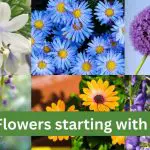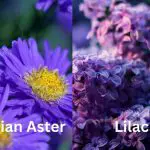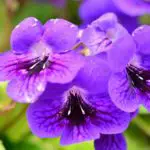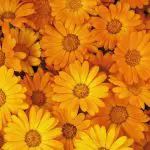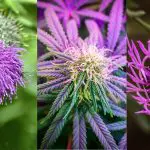Last Updated on February 2, 2023 by Derek
When a seed germinates, it produces a plant. It is only partially correct to state that flowers grow from seeds, but yes the female part of the flower does have seeds inside them, as the entire plant grows from the seed.
Many non-flowering plants, such as pine trees, grow from seeds. The plant reproduces once it has reached maturity.
Flowers appear as the seed develops into an adult plant and is ready to reproduce. They are particular structures that participate in reproduction, which includes pollination and fertilization.
Seeds are uniquely suited to a wide range of tasks, the links between which are not always clear. Multiplication, perennation (survival of stressful seasons like winter), dormancy (a condition of halted development), and dissemination.
Pollination and “seed habit” are regarded as the most significant elements responsible for the remarkable evolutionary success of flowering plants. It numbers more than 3,00,000 species.
Where do Seeds come from?
The obvious answer is from a floral or fruit, but it’s more complicated than that. Conifer seeds, like pine tree seeds, are held in scales within the cone.
The mini helicopters or samaras contain maple tree seeds. The seed of a sunflower is held in its enormous blossom, which most of us are familiar with.
A peach’s enormous pit houses a seed within the shell or endocarp.
Do seeds come from flowers?
Yes! Seeds come from the female part of the flower pistil which produces seeds. But seeds are not found in all flowering plants.
Some plants also have sterile blooms because they have been reproduced by cuttings for so long (like lemongrass).
Then there are blooming plants that farmers have developed to create so-called double blooms (which contain more petals and are frequently regarded as more beautiful). They are normally sterile.
Seeds are an aftereffect of a flower or floral structure.
Sometimes, but not usually, seeds are coated in fruits. In most plant families, seeds are the principal mechanism of proliferation.
The seed’s life cycle begins with the flowers and ends with the seedling, although many processes in between differ amongst plants. Flowers reproduce (create more of themselves) by producing seeds.
Where are the seeds on a flower?
Seeds are generated in the ovaries which are located in the basal section of the female part of the flower called the pistil, in the typical flowering plant, or angiosperm.
The ovary, which houses the potential seeds, or ovules, is comprised of the pistil, a tube-like structure centrally located in the flower. A stalk, also known as a style, extends from the ovary; the stigma, which has a variety of shapes and can occasionally be sticky, extends up to the stigma’s pollen-receptive tip.
Do flowers produce fruits as a general rule?
Flowering is an important stage in fructification, no flowers, no fruit.
In most situations, citrus trees produce many more blooms than the ultimate amount of fruits produced. It is often a very small fraction of the initial blossom number.
Fruit set, rather than flower quantity, is the criterion that frequently influences yield in citrus. As is true in other species that develop a high number of flowers.
However, this rule does not apply to flower-bearing plants since certain plants, such as roses and lilies. They do not produce fruits and their flowers are simply picked out or it is shredded to the ground when withered.
How do flowers grow from seed?
The embryo within the seed begins to develop into a seedling. Roots grow downward to help the plant stay planted.
Roots also absorb and retain water and nutrients. A shoot grows into a stem which transports water & nutrients taken from the roots towards the remainder of the plant.
The stems also support the leaves, allowing them to gather sunlight. Photosynthesis is the process through which leaves catch sunlight and convert it into energy for the plant.
How do you get seeds from flowers?
Use clean garden scissors or a knife to cut the flower head and remove the seeds from the pistil round part. Place the mature seeds from the blossom head on waxed paper.
Allow about a week for the seeds to dry. Remove any husks or shells from the seeds. Seal the packet with the seeds. Keep in an airtight container in a cold, dark, and dry place.
Plant the seeds in the spring.
Do annuals produce seeds or any perennials?
Annual blooms produce seeds after the planting period (late summer or early fall). Signifying to the plant that its life span is complete.
They will perish when the first heavy frosts of October arrive, having completed their reproductive purpose.
Annual plants die off after one growing season, but perennial plants sprout every spring. Perennials often bloom for a shorter amount of time than annuals.
Do roses grow from seeds?
Yes, Roses can be grown out of seeds. Fomenting rose from seed takes some time but is simple.
Before producing roses from seed, the rose seeds must undergo a period of cold wet storage known as “stratification” before sprouting.
How to collect seeds from vegetables to grow again?
Saving seeds entails three steps: choosing seeds from the best plants, collecting them at the correct time, and carefully storing them until you are ready to sow them.
- Make sure to conserve seeds from open-pollinated plants rather than F1 hybrids. Open-pollinated vegetable types are frequently heritage kinds that have developed spontaneously through time and been transmitted from generation to generation of gardeners.
- Only conserve seeds from the strong plants that produce the greatest fruit, and avoid utilizing seeds from feeble or unusually appearing plants.
- Scrape the seeds out from the vegetables and lay them out along kitchen towels to dry.
When completely dried, put in an envelope in a cold, dry location. In the case of beans and poods.
Take the pods from the plant and place them on a tray indoors to dry. Allow a minimum of two weeks until shelling the pods, or wait until the next spring to plant the seeds.
- Seeds should be kept in separate envelopes inside an airtight container above ground level in a dry environment. This keeps moisture from ruining your seeds or animals like mice from consuming your stock.
How does a flower grow step by step?
The primary stages of the flower life cycle include seed, germination, growth, reproduction, pollination, and seed dispersal.
- Seed: A plant life cycle begins with a seed, and each seed contains an embryo, which is a little plant. Flowering plant seeds are classified into two types: dicots and monocots.
- Germination: The ground must be warm and moist for a seed to sprout after it has fallen there. Certain seeds also require light.
The seed gathers water and grows after a few days in the soil until the seed covering fractures. Germination, also known as sprouting, is the process by which the seed and its stem, known as the hypocotyl, emerge from the earth.
The tiny root grows and descends in quest of nutrients and water. Soon after, the seed fell off and the initial real leaves appeared.
- Growth: Plants must generate their food to reach the blooming life stage of development. The photosynthesis process starts the moment the leaves develop.
The stem lengthens as it approaches the sun and transfers water and nutrients from the roots through the leaves. New leaves sprout from the top part of the stem, known as the meristem.
Flower buds appear after a time. Some plants blossom in days, while others take months or years to bloom.
- Reproduction: Within the bud, a little yet complete flower emerges. The sepals guard the bud till it opens.
The sepals at the base of the flower resemble little leaves as the bud grows and blossoms into a full flower over time. The flower is the plant’s reproducing organ.
Can you collect seeds from the cut flowers?
Usually, no. Cut flowers are usually gathered at the peak of their blossoming season.
A flower will not commence generating seeds unless it has been pollinated. So, if the flowers have been cut for a short length of time or after the pollination process, then the seeds can be scraped out of them.
Where are the seeds in a rose?
The rose seed is located in the rose hips. Rose hips are indeed the seed pods or fruit of rose plants. They are often red or orange, but can sometimes be black or purple, and mature at the end of summer or fall.
FAQ relating to do flowers have seeds?
What flowers have seeds?
Sunflower, hibiscus, rose, lavender, and many other angiosperm flower-bearing plants have seeds in their blooming part.
Do roses have seeds?
Yes, roses have seeds in their rose hips, which are the seed pod of the rose.
Do tulips have seeds?
Tulips do contain seeds, which are discovered inside the tulip’s seed pod. Tulip seeds, like all other plants, require pollination to develop.
What are the balls on roses?
Moss galls are the golf-sized balls that you find on roses. They are produced by a small wasp who lays her eggs on the stem of rose bushes mostly in spring.
Key Takeaways
- Seeds come from a floral or fruit, but it’s more complicated than that. Conifer seeds, like pine tree seeds, are held in scales within the cone.
- Seeds come from the female part of the flower pistil which produces seeds. But seeds are not found in all flowering plants.
- Seeds are generated in the ovaries which are located in the basal section of the female part of the flower called the pistil, in the typical flowering plant, or angiosperm.
- Flowering is an important stage in fructification, no flowers, no fruit.
- Annual blooms produce seeds after the planting period (late summers or early fall). Signifying to the plant that its life span is complete.

